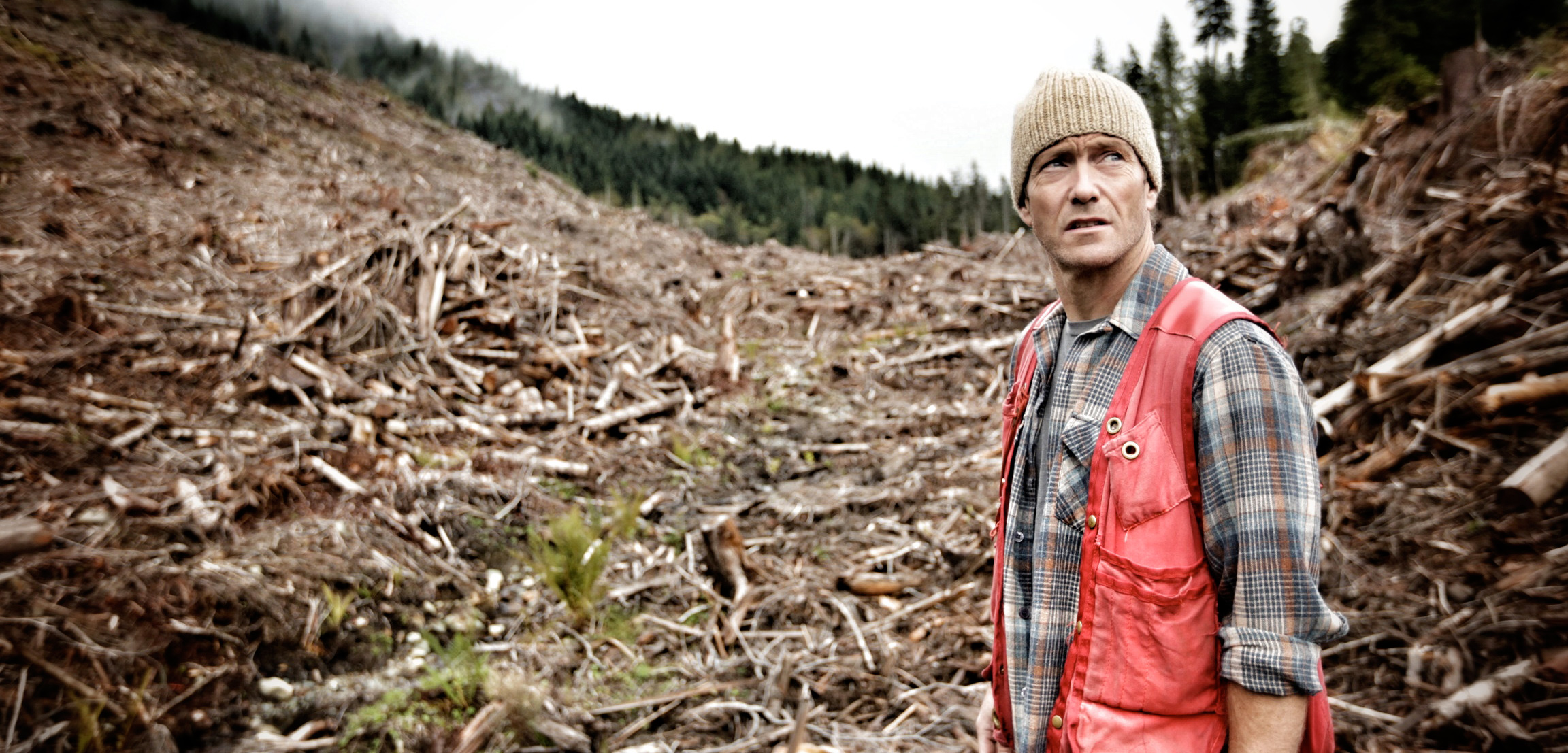Film Review: Hadwin’s Judgement
Director Sasha Snow filmed a documentary based on John Vaillant’s award-winning 2005 book, The Golden Spruce.
Article body copy
The perils of adapting a book into a film are legion. All of the lovely detail, research, and suffusive atmosphere that crowd into the pages of a book can be oddly flattened. With no discursive perambulations allowed, and little time for wandering off into the bushes where stranger things await, you’re frogmarched through the story.
If ever the essential conflict between films and books were given a test case, it would be in Hadwin’s Judgement.
Director Sasha Snow’s adaptation of John Vaillant’s book The Golden Spruce hits theaters this fall, after a festival run. Vaillant’s book was released in 2005, a few years after a logger named Grant Hadwin took a chainsaw to Kiidk’yaas, an ancient Sitka spruce sacred to the Haida, the First Nations people of Haida Gwaii. A rare genetic mutation rendered the tree’s needles a deep gold, making it stand out like a lit candle in the cathedral-like splendor of the rainforest. If Hadwin’s intent was to make a statement about the rapacious logging practices in British Columbia, he succeeded. The fallout was a shock wave of grief and rage that rippled through communities up and down Canada’s West Coast. Before Hadwin could face trial, he disappeared, leaving behind a wrecked kayak and a 10-page manifesto outlining his rationale.
When The Golden Spruce picked up the Governor General’s award for nonfiction in 2005, the story was still fresh, still bleeding. The film version has taken a number of years to come to fruition, and, in the interim, the incident has faded from memory. So it is fitting that Snow begins his documentary with a Haida legend about a wild man emerging from the sea, maddened by the tidings that he carries. It is a decidedly romantic approach that is maintained throughout. This is a sumptuously beautiful film, made with care and commitment. But whereas Vaillant’s book did not skimp on the more disturbing aspects of Hadwin’s life—including bouts of mental illness, a few arrests, and possibly a suicide attempt—the film depicts him as a square-jawed Übermensch, able to leap mountains and swim in subzero seas. (It would be interesting to know if the Haida people remember him quite this way.)
Vaillant’s spare, clean prose had the quality of something told around a campfire—the mystery at its center vibrating with almost radioactive weirdness. Was Hadwin alive or dead? Did the sea swallow him whole or was he alive and well and living in Siberia? In the film, as the people who knew Hadwin recount the events that led up to the moment when he took a chainsaw to the great tree, the misalignment between film and book becomes most apparent. The depth and breadth afforded in a book isn’t possible in the same way in a film. Images and recreations reduce the power of the story, caging it like a wild thing. One returns to the original story, looking for the ineffable scent of mystery that lingers only in the air of the deepest forest or in the pages of a book.

